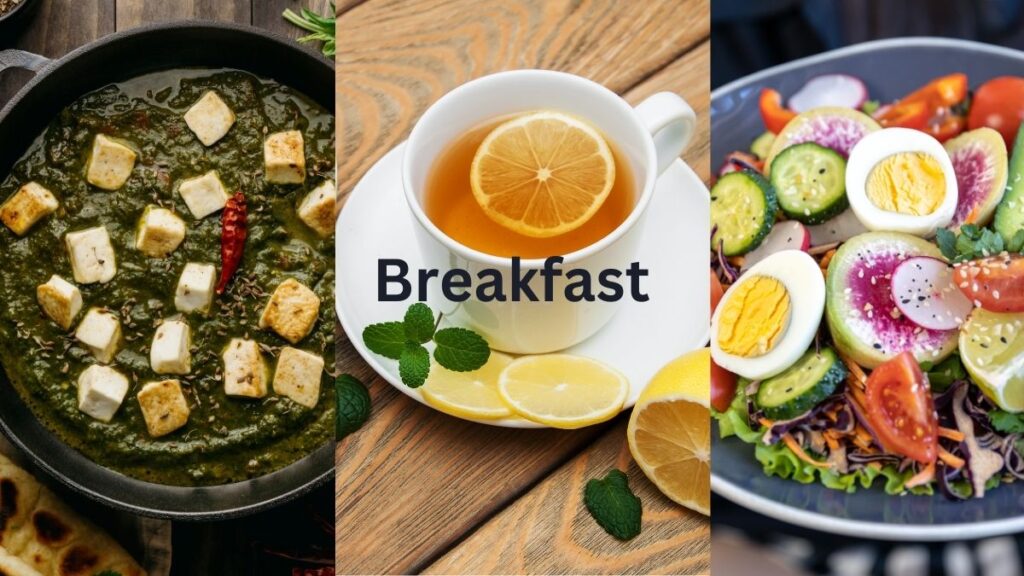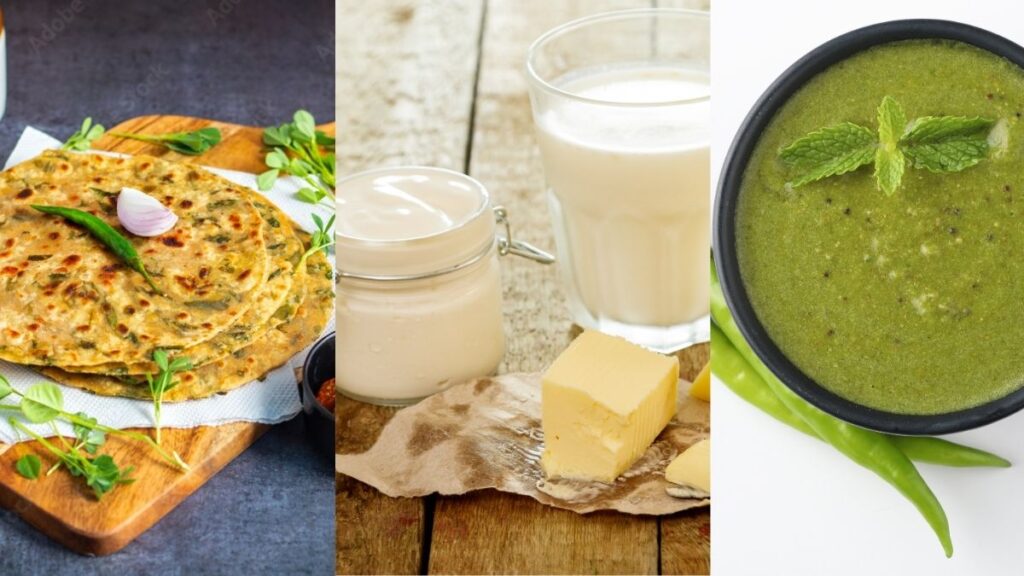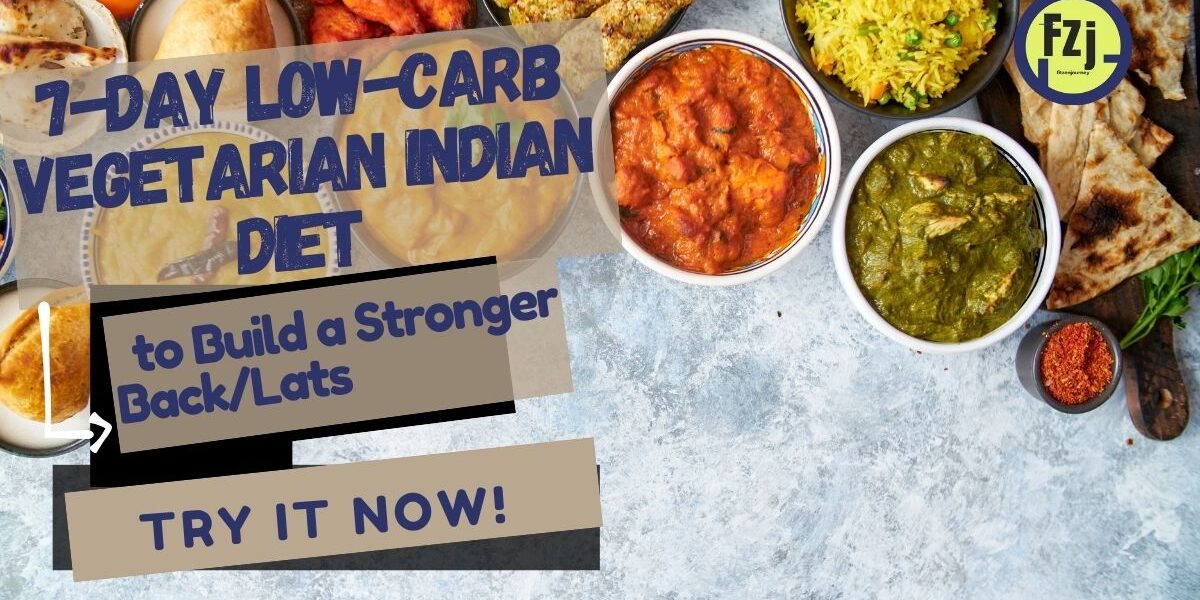The low-carb vegetarian Indian diet is becoming a hit in India as more people aim for a healthier, more balanced lifestyle. This dietary approach not only emphasizes the importance of balanced nutrition but also addresses the unique challenges faced by vegetarians in maintaining a low-carb intake while meeting their protein and nutrient needs.
In a country where traditional meals are often carb-heavy and protein sources are limited for vegetarians, adopting a low-carb Indian vegetarian diet can be both rewarding and challenging. However, with the right knowledge and strategic meal planning, you can craft an Indian diet that is wholesome, flavorful, and aligned with your health goals.
Let’s dive deeper into the world of low-carb vegetarian eating in the Indian diet context and explore how you can embrace this lifestyle for better health and vitality.
Benefits of a Low-Carb Vegetarian Indian Diet
Switching to a low-carb vegetarian diet brings numerous advantages that positively impact your health, energy levels, and overall quality of life.
1. Promotes Weight Loss and Management
Reducing your carbohydrate intake while focusing on nutrient-dense plant-based foods helps in shedding extra pounds and maintaining a healthy weight. By avoiding refined carbs and sugar-laden foods, you reduce calorie intake without compromising on essential nutrients.
2. Stabilizes Blood Sugar Levels
This diet is particularly beneficial for individuals with diabetes or those at risk. By prioritizing whole foods and minimizing sugary and high-carb items, you can maintain steady blood sugar levels, reducing spikes and crashes.
3. Enhances Overall Health and Energy
Incorporating low-carb, nutrient-rich foods like vegetables, legumes, and dairy products ensures your body gets essential vitamins, minerals, and antioxidants. This dietary pattern can lead to:
Improved digestion due to higher fiber intake
Increased energy levels from sustained-release carbohydrates and proteins
Enhanced vitality as your body operates more efficiently on nutrient-dense foods
By focusing on a balanced approach, a low-carb vegetarian diet helps you achieve long-term health benefits without feeling deprived.
What Is a Low-Carb Indian Diet?
A low-carb diet limits carbohydrate intake to less than 20% of your daily calories. For some, it may involve restricting carbs to less than 45% of total energy intake. The idea is to minimize simple carbs (like sugar and refined grains) and replace them with complex carbohydrates, healthy fats, and protein-rich foods.
In the Indian context, traditional meals often rely on rice, wheat, and sugary desserts. A low-carb diet modifies these eating habits by incorporating healthier alternatives such as vegetables, legumes, paneer, and spices.
Why Choose a Low-Carb Indian Diet?
The benefits of a low-carb Indian vegetarian diet go beyond just weight loss. Here’s why this diet is worth adopting:
1. Nutritional Diversity
Indian cuisine offers a vast range of low-carb ingredients, from leafy greens and lentils to dairy and spices. This ensures variety in taste and nutrition, making the diet sustainable and enjoyable.
2. Health Improvements
By eliminating high-carb and processed foods, you reduce the risk of lifestyle diseases like diabetes, obesity, and cardiovascular issues.
3. Flavorful Meals
Unlike restrictive diets that can feel monotonous, a low-carb Indian diet is rich in flavors, thanks to the use of herbs, spices, and diverse cooking methods.
Low-Carb Indian diet Vegetarian Food List
Here’s a detailed breakdown of low-carb, vegetarian-friendly foods commonly available in Indian kitchens:
Vegetables
Low-carb vegetables are rich in fiber, vitamins, and minerals while being low in calories and carbs.
Lentils and Legumes
These provide essential protein and fiber but should be consumed in moderation due to their carb content.
Dairy Products
Dairy is a cornerstone of Indian vegetarian diets, offering high-quality protein and fats.
Spices
Spices like turmeric, cumin, and coriander add flavor and health benefits to your meals without adding carbs.
Foods to Avoid
To adhere to a low-carb diet, steer clear of:
Sugary Items: Sweets, cakes, pastries, and sugary beverages.
Starchy Foods: White rice, potatoes, and refined wheat products like bread and pasta.
High-Carb Fruits: Limit bananas, mangoes, and grapes; opt for berries instead.
Alcoholic Drinks: Avoid beer and opt for dry wine or spirits in moderation.
7-Day Low-Carb Indian Vegetarian Diet Plan
This comprehensive 7-day meal plan is carefully designed to provide delicious, nutrient-rich, and low-carb options tailored to a vegetarian Indian diet. It ensures that you enjoy flavorful meals while staying within your carb limit.
Day 1: Monday
Breakfast:

- Paneer Bhurji with sautéed spinach (1 cup)
- A handful of roasted nuts (almonds or walnuts)
- Herbal tea or black coffee
Lunch:
- Cauliflower rice (1 cup)
- Palak Paneer (spinach curry with cottage cheese)
- Mixed vegetable salad with olive oil dressing
Dinner:
- Zucchini noodles with creamy tomato curry
- A bowl of spiced yogurt (curd)
Day 2: Tuesday
Breakfast:

- Methi (fenugreek) paratha made with almond flour
- Mint chutney
- Unsweetened buttermilk
Lunch:
- Stuffed bell peppers with spiced paneer
- Cabbage and carrot salad
Dinner:
- Eggplant curry with a side of sautéed mushrooms
- Flaxseed roti
Day 3: Wednesday
Breakfast:
- Vegetable omelet made with chickpea flour (besan)
- A handful of sunflower seeds
- Masala chai without sugar
Lunch:
- Brown rice pulao with mixed vegetables and spices
- Cucumber raita
Dinner:
- Stir-fried broccoli and tofu in garlic sauce
- A small bowl of green moong dal
Day 4: Thursday
Breakfast:
- Millet upma with curry leaves and shredded vegetables
- Fresh coconut water
Lunch:
- Flaxseed roti with methi malai mutter (fenugreek and peas curry)
- A side of cucumber slices
Dinner:
- Cauliflower stir-fry with paneer cubes
- Spiced curd with mint leaves
Day 5: Friday
Breakfast:
- Coconut flour dosa with coconut chutney
- A handful of soaked almonds
Lunch:
- Zucchini curry with a side of cauliflower rice
- Green salad with lemon juice
Dinner:
- Masoor dal soup with sautéed spinach
- Paneer tikka (grilled cottage cheese cubes)
Day 6: Saturday
Breakfast:
- Chia seed pudding with unsweetened almond milk and strawberries
- A cup of green tea
Lunch:
- Cabbage stir-fry with mustard seeds and curry leaves
- Flaxseed roti
Dinner:
- Mixed vegetable curry with tofu
- A bowl of spiced buttermilk
Day 7: Sunday
Breakfast:
- Scrambled paneer with turmeric and coriander leaves
- A handful of roasted pumpkin seeds
- Black coffee or tea without sugar
Lunch:
- Bottle gourd curry (lauki) with almond flour roti
- Tomato and cucumber salad
Dinner:
- Palak dal (spinach and lentil curry)
- Grilled mushrooms with garlic butter
Additional Tips for Meal Preparation
- Portion Control: Stick to recommended serving sizes to avoid overeating.
- Hydration: Drink at least 8-10 glasses of water daily.
- Meal Prep: Plan and prepare meals in advance to save time and ensure you stick to your diet.
- Variety: Rotate dishes to keep the diet enjoyable and avoid monotony.
Tips for Success
- Focus on Healthy Fats: Include olive oil, mustard oil, and avocado to keep you full and reduce cravings.
- Increase Fiber: Add raw salads, leafy greens, flaxseeds, and sprouts to support digestion.
- Boost Protein Intake: Incorporate paneer, lentils, and nuts to meet your protein needs.
- Exercise Regularly: Pair your diet with physical activity for optimal results.
Final Thoughts
The low-carb vegetarian Indian diet is more than just a meal plan—it’s a sustainable lifestyle change that promotes health and well-being. By incorporating a variety of nutrient-rich ingredients and avoiding high-carb foods, you can enjoy a fulfilling diet without compromising on taste or nutrition.
Frequently asked questions
Carbohydrates can be avoided by focusing on foods rich in proteins and healthy fats. Replace your regular chapatis, dosa, or idly with those made from flax seed, pumpkin seed, sunflower seed, coconut, or almond flour. Include curries, fries, and salads made with chicken, fish, and eggs, as well as vegetables such as broccoli, cabbage (Patta Gobhi), capsicum, carrots, cauliflower, mushrooms, and green leafy vegetables.
Indian cuisine mainly consists of rice, idly, dosa, or flatbreads like chapati, roti, naan, paratha, and poori made from wheat flour, or maida (refined flour). Replace these with low-carb nuts, seeds, and coconut flour which can make an excellent base for your dosa, idly, or rotis. These combined with spiced curries and fries made from non-starchy vegetables, chicken, fish, eggs, etc., make it a filling entreé.
There isn’t a diet entirely free of carbs since most foods contain some carbohydrates. For instance, low-carb non-starchy vegetables have about 5g of carbs. However, several popular diets promote weight loss by limiting or restricting carbohydrates. The ketogenic diet is a well-known example. Other lesser-known diets include the paleo diet, Dukan diet, Atkins diet, and Zone diet
Low-Calorie Diet (LCD) – These diets usually allow about 1,200 to 1,500 calories a day for women and 1,500 to 1,800 calories a day for men.





[…] are known to enhance digestive health and alleviate fluid retention. When incorporated into a well-balanced diet and a healthy lifestyle, they may aid in weight […]
[…] Healthy Fats: […]